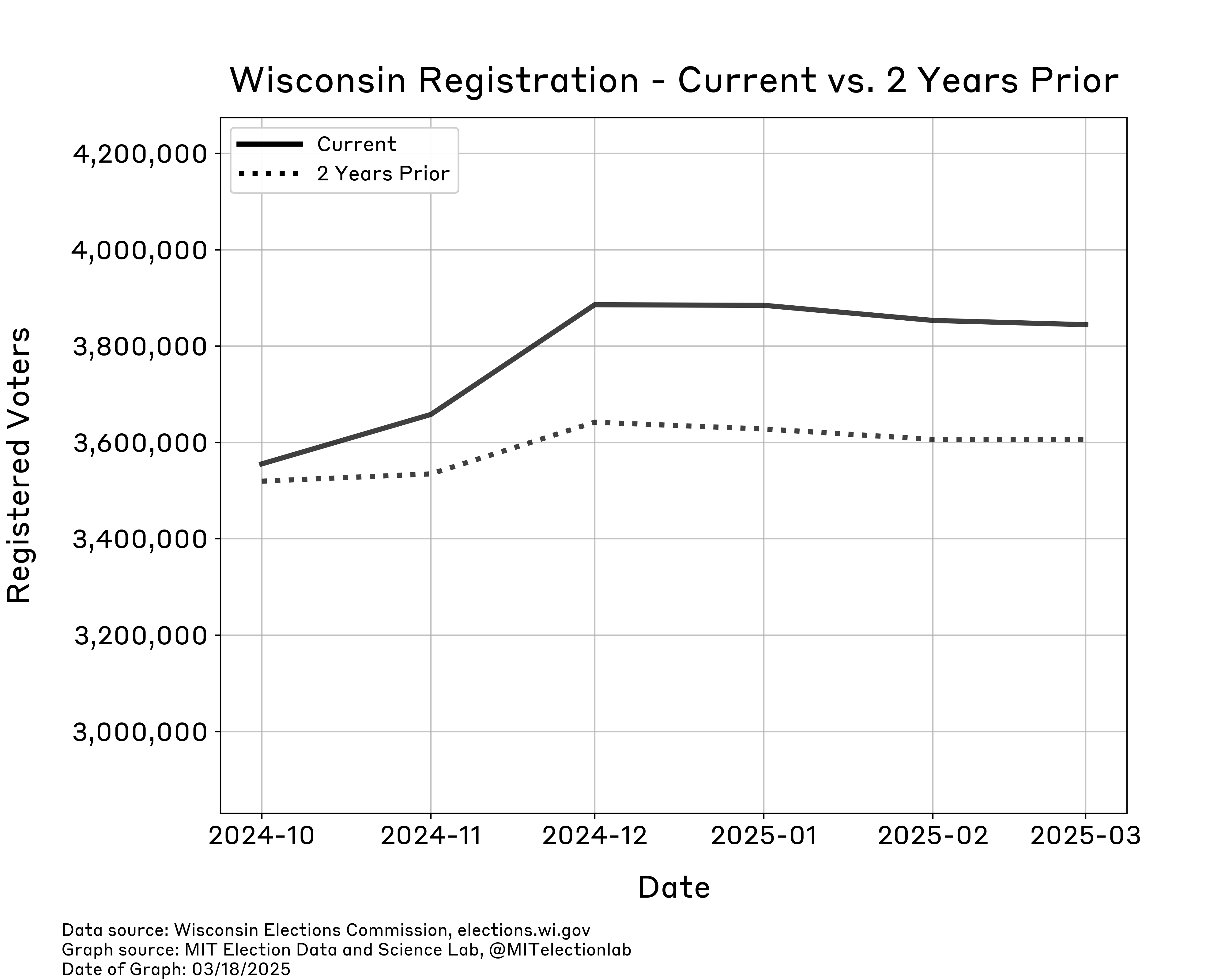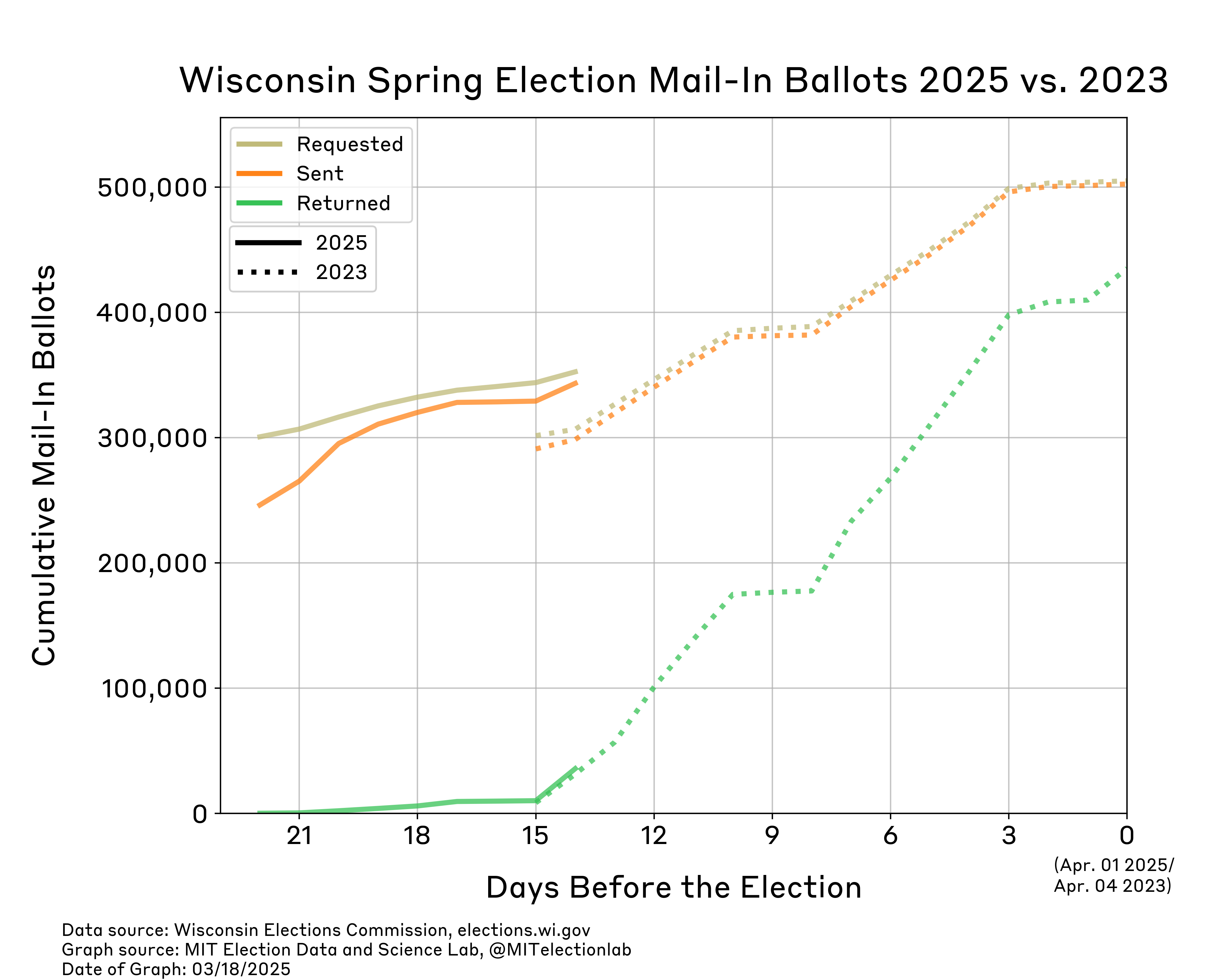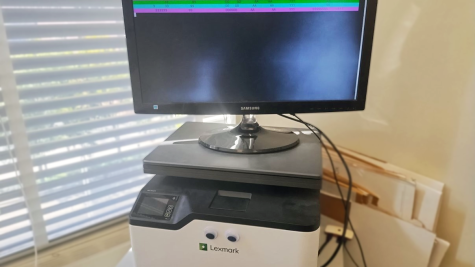Kicking Off Our 2025 Election Season
Our work as part of the Stanford-MIT Elections Performance Central continues!
While 2025 is not a federal election year, that doesn’t mean there are no elections happening! Early voting starts today, for example, in Wisconsin’s spring election, which will occur on April 1.
With Wisconsin and a few other states preparing to run elections this year, we will continue the work we started last fall with the Stanford-MIT Elections Performance Central (EPC) initiative. This project was developed to address the challenges facing election adminstration in the United States during the 2024 election, and as part of that work, we here at the MIT Election Lab dove deep into the data and patterns of early and mail ballots, voter registration, and more.
This year, we’ll be following election administration data in Wisconsin’s spring election, as well as a few other states that have important statewide elections later in the year. We’ll be posting those data on our social media platforms, as well as on the Elections Performance Central website. While these data updates will be fewer and less frequent than during the full-court press of a presidential election, they nevertheless offer interesting insights into election performance, and we look forward to bringing those insights to you.
To kick things off, today we’re bringing you two visualizations from Wisconsin. The first graph below shows the total number of registered voters in the Badger State compared to two years ago. Interestingly, there are more voters registered in 2025 than there were in 2023, which may be influenced by 2024 being a presidential election year; while registration tends to increase around federal elections, the effect tends to be greater for presidential elections than for midterms.

In the second graph, we can see the number of mail-in ballots applied for, sent, and returned this year and in 2023, when Wisconsin voters also cast their ballots in a spring election. It’s early in the mail voting period, but already 2025 looks to be similar to 2023 (though this year, the state began reporting data about a week earlier than it did two years ago).

We’ll be updating these visualizations regularly, and adding in new data as it becomes available—we plan to collect data on early in-person voting, for example, which begins in Wisconsin today. To stay up-to-date with what we’re following, make sure you visit the Wisconsin section of the EPC website, where you can also find our reports from last year’s presidential election.


